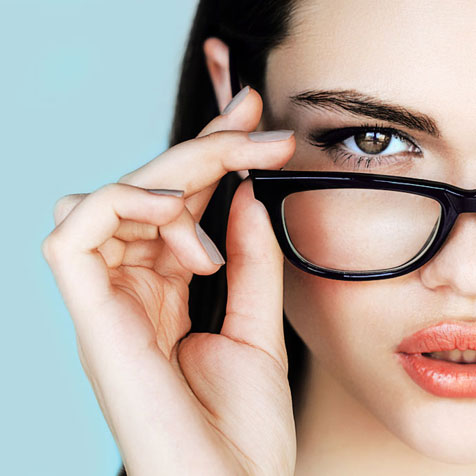- Details

As end of summer approaches, we are praying for a little cool down in weather and break from this heat! With weather changes (hopefully.. maybe) approaching, we also see changes in the surface of our eyes coming up, with dryness, or maybe different allergens in the air. These changes can make eye drops necessary. These can range from over-the-counter artificial tears, or prescription drops for dry eye, anti-inflammatories, or even for conditions like glaucoma. We’ve all been there, you try to get drops in and you end up with 4 or 5 drops EVERYWHERE on your face… EXCEPT for your eyes! Or you wonder, did it really get in there?! We know sometimes it can be tricky, so here are a few tried and true tricks to help maximize those eye drops!
1. Tilt your head back slightly and look up
2. Gently pull down your lower lid, so it creates a pocket between your lower lid and eye.
3. Hold the bottle vertically, about an inch above the pocket you created and squeeze the bottle until you feel a drop, making sure you don't actually touch your eyelid or eye in the process.
4. Gently close your eye for about a minute afterwards.
Optional: Gently press on the inside corner of your closed eyes right after you insert the drop, with your index finger and thumb for two to three minutes (to keep the drops from draining into your throat and getting into your system).
The same sequence can be repeated lying down on your back, which sometimes can be easier than tilting your head back.
If you are still having trouble getting the drop into your eye:
You can tilt your head to the side, or lie down on your side, and with your eyes closed, put a drop at the inner corner of your eye, the side closest to your nose and then gently open your eyes, the drop should suction right in!
Worst Case Scenario:
If you are still not sure the drop actually got in your eye, put in another drop. The eyelids can hold only about one drop, so any excess will just run out of the eye. It is better to have excess run out than to not have enough medication in your eye.
- Details

We’ve all heard that carrots are good for our eyes, but what other foods are good for our eyes?! In general, a well-rounded, healthy diet also leads to healthy eyes! Here are five superfoods that are well, SUPER for your eyes!
1. Fish
Including fish in your diet whether it be salmon, tuna, mackerel, or other cold water fish rich in omega 3 fatty acids, can protect against dry eye syndrome, macular degeneration and cataracts. Omega 3’s are also great anti-inflammatories, which contribute to healthy tissue. Not a big fan of fish? Keep an eye out for omega 3 supplements in liquid or gel form, or mixed with a multi-vitamin!
2. Leafy Greens
Spinach, kale, collard greens, and broccoli are great for healthy eyes and preventing macular degeneration and promoting good retinal health. Lutein and zeaxanthin are important carotenoids in our retina, and can be found in leafy green vegetables.
3. Eggs
Eggs are also rich in lutein, zeaxanthin and vitamin A. Eggs are full of antioxidants that assist in taking care of your eyes! Zeaxanthin can help protect eyes against UV radiation from the sun.
4. Fruits and Veggies, y’all
The more colorful your diet is, the better! These colorful compounds usually contain vitamin A and the carotenoids mentioned above, that help reduce risk of macular degeneration and reduce the formation of cataracts.
5. Seeds and nuts
Almonds, sunflower seeds, and pecans are all good sources of vitamin E. Vitamin E is a good antioxidant that can also help protect against macular degeneration.
In general, good overall health goes hand in hand with good eye health. However, there are still certain conditions such as macular degeneration, glaucoma, and cataracts that are screened for at your annual eye exams. Remember, scheduling and keeping up your annual eye exams go a long way in promoting good eye health!















